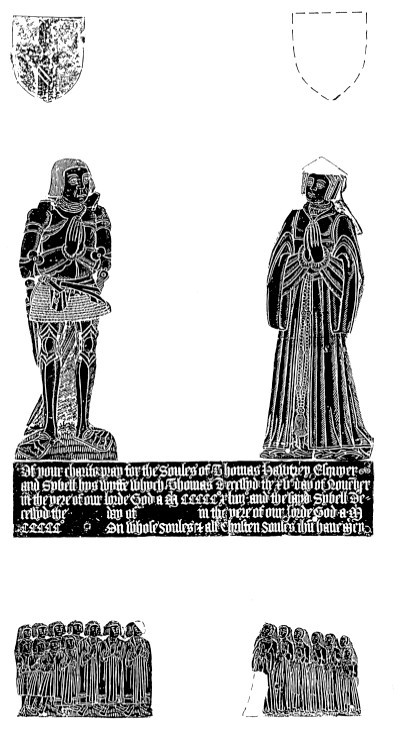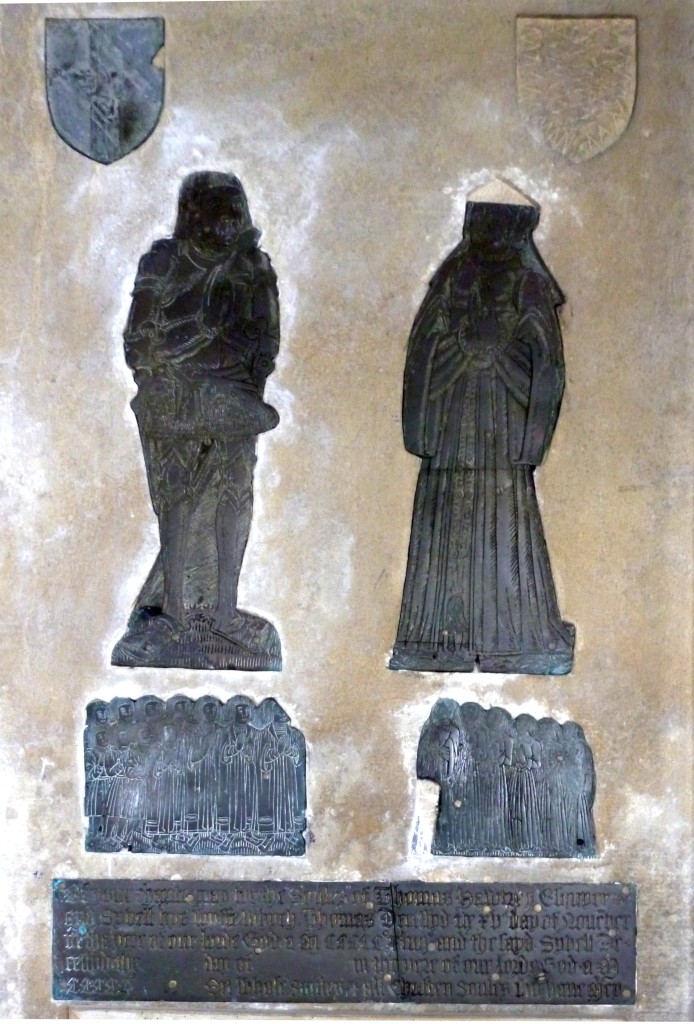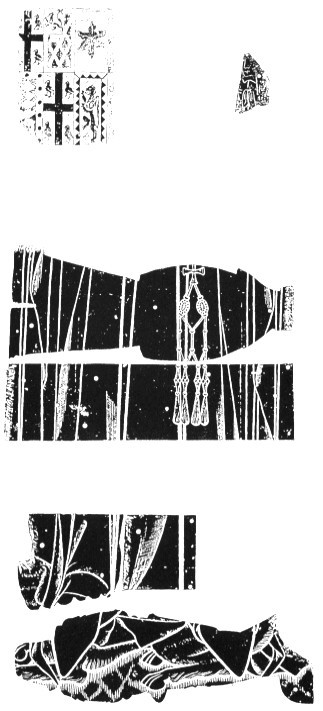Thomas Hawtrey
- Date of Brass:
- 1544
- Place:
- Ellesborough
- County:
- Buckinghamshire
- Country:
- Number:
- I
- Style:
- London G
Description
January 2025
Thomas Hawtrey was the last of a succession of men of the same name to live at Chequers in the parish of Ellesborough, Buckinghamshire. He was aged thirty or more at the Inquisition post mortem following his father’s death in 1522, an age close to that of Henry VIII. Perhaps it was this that kept him from suffering any serious consequences when he was one of a dozen men to rob the nest of a goshawk in a wood belonging to the king in Ellesborough in 1530, taking a number of fledglings. He and his accomplices were summoned to the Court of Star Chamber, but nothing seems to have come of it even though those who came to Ellesborough to report on the incident were attacked and beaten.
Before his father’s death, he had married Sybil, one of the two daughters and co-heirs of Richard Hampden. In 1524 Thomas Hawtrey and Robert Dormer were commissioners for Buckinghamshire for the collection of the Subsidy, the nationwide tax imposed that year, but apart from the incident in 1530 described above, his life seems to have been unremarkable.
On his death on 15 November 1544 Thomas was succeeded by his son William, aged 26. He was buried in the parish church of Ellesborough and a brass placed in memory of him and Sybil, whose date of death was left uncompleted on her death in 1552. He is depicted in armour, she in a gown with full fur-lined sleeves from which emerge the sleeves of her kirtle with frills at the wrist. Her square-necked bodice frames what may be a v-necked chemise. A long rosary terminating in a tassel hangs from her belt. Although the top of her head is now missing, enough remains to show her English hood with lappets turned up. Below the inscription are two groups of children, eleven sons and six daughters. The brass was engraved in London around 1546 and belongs to the large group styled London G.
The plate of the Hawtrey sons is cut from an elaborate heraldic shield, an earlier use of the same piece of plate. Part of this shield can be seen on the reverse of the sons. A manuscript in the British Library shows that this shield was once part of a completely different brass in another church: the brass of Sir Thomas Wriothesley, died 1534, and his second wife, Anne Ingleby, in the church of St Giles Cripplegate in the city of London. This earlier brass must have been discarded when St Giles Cripplegate had to be repaired and partly rebuilt after a fire in 1545. The British Library manuscript shows that it included other components (two effigies kneeling at prayer desks, a trinity and a canopy). Perhaps these were damaged beyond repair.
The rest of the Hawtrey brass is also made from the remains of earlier brasses, visible on the reverses of the various plates. Most of them comprise four parts from the large figure of a monk, dating from around 1430, with a drawstring device that shows he belonged to the order of St John. The likely source of this re-used brass was the London base of the order, the priory of St John in Clerkenwell, dissolved in 1540. Three further parts from the same figure were used for new brasses at Lambourne, Essex, and Harlington, Middlesex.
Copyright: Jon Bayliss (text and photo); Lack, Stuchfield & Whittemore, The Monumental Brasses of Buckinghamshire (1994) (rubbings)
- © Monumental Brass Society (MBS) 2025
- Registered Charity No. 214336



